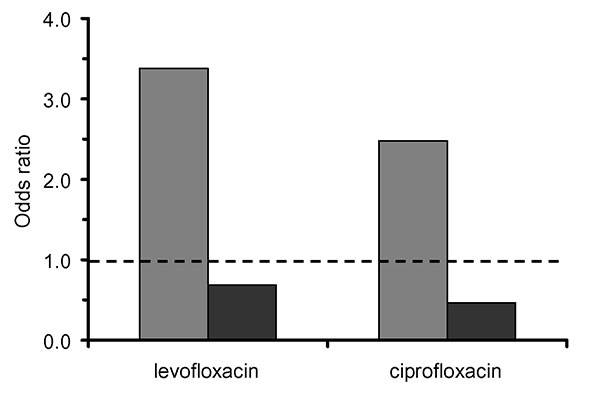Volume 9, Number 11—November 2003
Research
Fluoroquinolones and the Risk for Methicillin-resistant Staphylococcus aureus in Hospitalized Patients1
Figure

Figure. Odds ratios from multivariable analysis for the isolation of MRSA (methicillin-resistant Staphylococcus aureus) and MSSA (methicillin-susceptible Staphylococcus aureus) after exposure to levofloxacin or ciprofloxacin. Results for MRSA shown in gray and for MSSA in black. All results adjusted for time at risk.
1This study was presented in part at the 42nd Interscience Conference on Antimicrobial Agents and Chemotherapy, Sand Diego, California, September 2002.
Page created: January 21, 2011
Page updated: January 21, 2011
Page reviewed: January 21, 2011
The conclusions, findings, and opinions expressed by authors contributing to this journal do not necessarily reflect the official position of the U.S. Department of Health and Human Services, the Public Health Service, the Centers for Disease Control and Prevention, or the authors' affiliated institutions. Use of trade names is for identification only and does not imply endorsement by any of the groups named above.